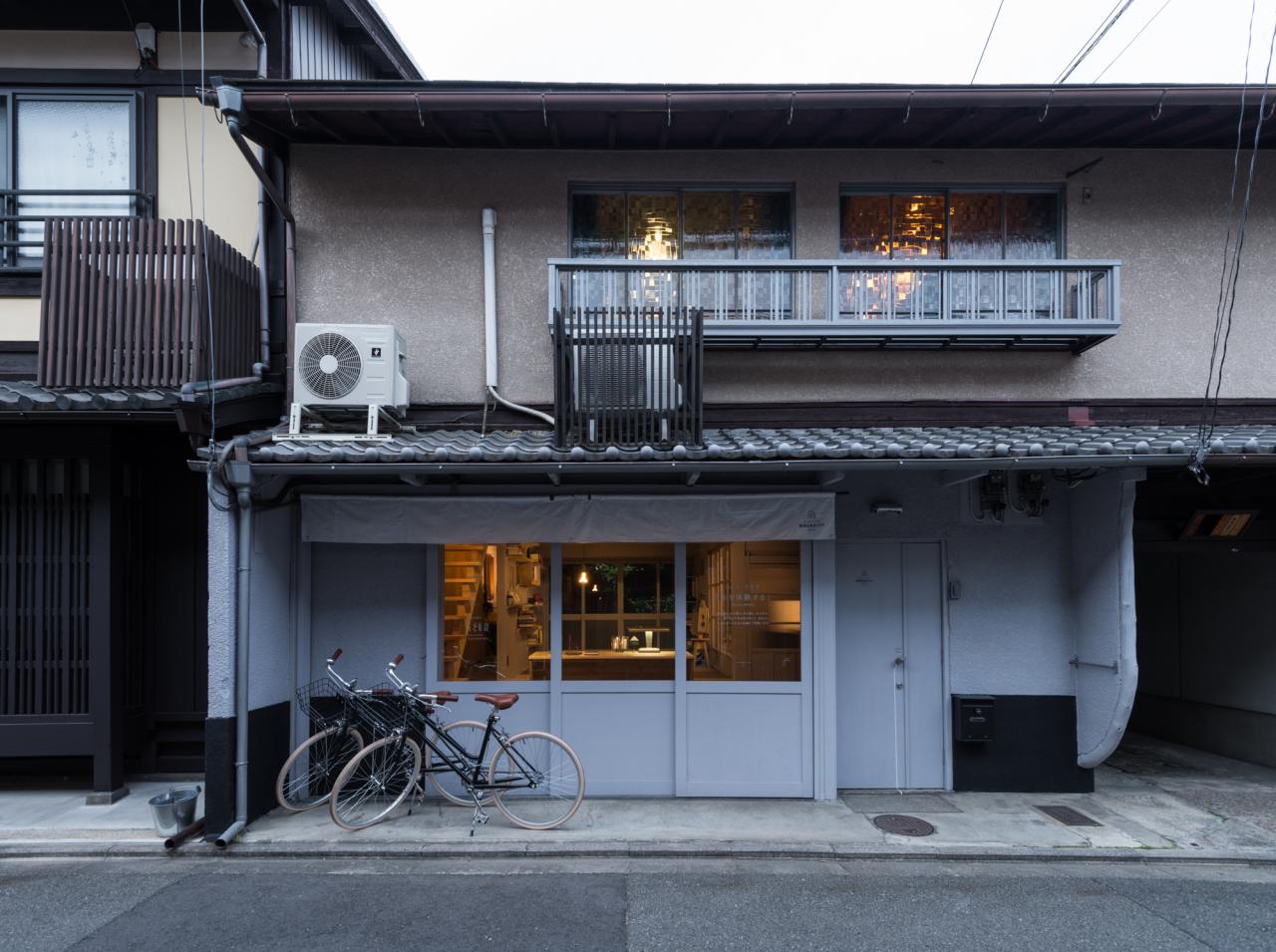
콘텐츠 파트너
ONESTORY endeavors to explore various the destinations in Japan and to present the sensibilities brought by the story of the journey.
콘텐츠 파트너

ONESTORY endeavors to explore various the destinations in Japan and to present the sensibilities brought by the story of the journey.
A “magazine hotel” is a way to gather different people together.
Did you know that there is a “magazine hotel” in Kyoto city? It’s called MAGASINN KYOTO. Try to see this renovated two-story house and former milk shop as a “magazine.” It has been “edited” to create a space where you can enjoy various different features. You can fully experience Kyoto’s culture with all your senses here. This “magazine” offers a space for one group to stay each night, a gallery space, an event space and a space where various miscellaneous items are sold.
MAGASINN KYOTO opened in May of 2016. Editor-in-chief Tatsuya Iwasaki originally wanted to make a miscellaneous goods store where people could stay overnight. The Hyogo Prefecture-born Iwasaki worked in Tokyo but had always wanted to return to the Kansai region someday. And so, together with some friends, he opened a shop in Kyoto City dealing in vintage items from the United States and Europe about two and a half years ago. Doing this, he thought that if he could also make the store a place where people could stay, it would be easier for friends living far away to stop in during a trip. And if those friends used these miscellaneous items during their stay, the items could be sold in a more authentic way. However, Iwasaki notes that there was a slight sense of discomfort of it being a miscellaneous goods store. “I wanted to create a tool and mechanism for gathering remarkable people and creators from around the world. Because the miscellaneous items were just a way to bring people in consistently, I thought that perhaps it didn’t have to be an ‘object’,” he says.
Iwasaki arrived at the “magazine hotel” concept on New Year’s Eve in 2015 while drinking with a mix of friends and acquaintances. He says that “Magazines are media delivered over a distance that visualize new and amazing unknown things. I’ve always liked magazines, and wherever I read them, I felt like the ‘za’ (rough) part of ‘zasshi’ (magazines) that embraced handling things a bit roughly really suited my easy-going personality. My interest in these things grew from that.”
Iwasaki arrived at the “magazine hotel” concept on New Year’s Eve in 2015 while drinking with a mix of friends and acquaintances. He says that “Magazines are media delivered over a distance that visualize new and amazing unknown things. I’ve always liked magazines, and wherever I read them, I felt like the ‘za’ (rough) part of ‘zasshi’ (magazines) that embraced handling things a bit roughly really suited my easy-going personality. My interest in these things grew from that.”
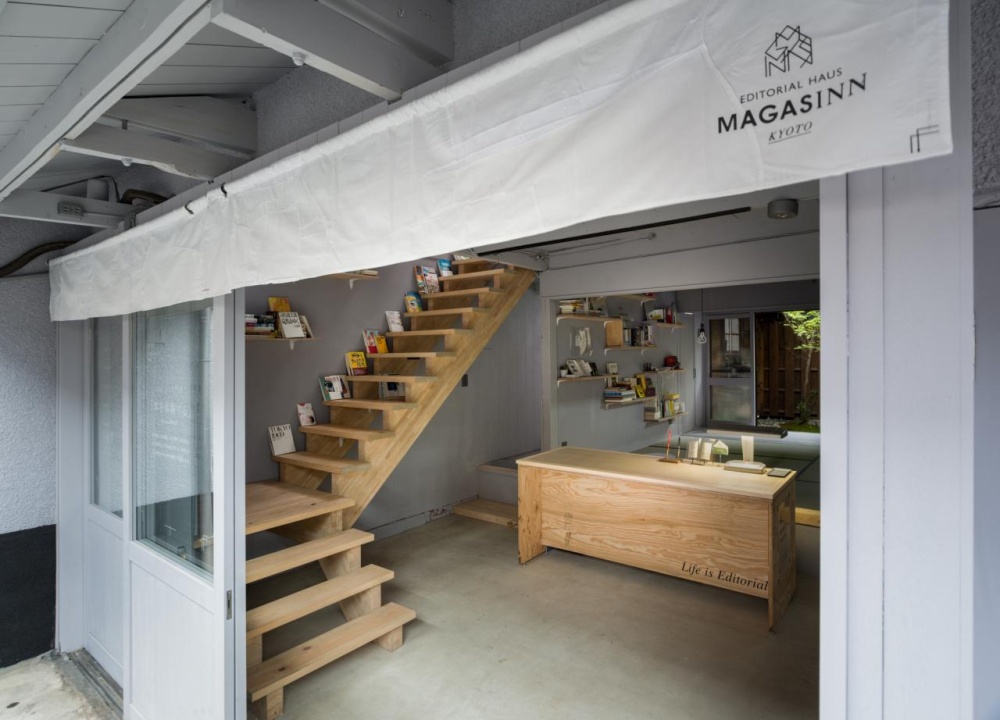
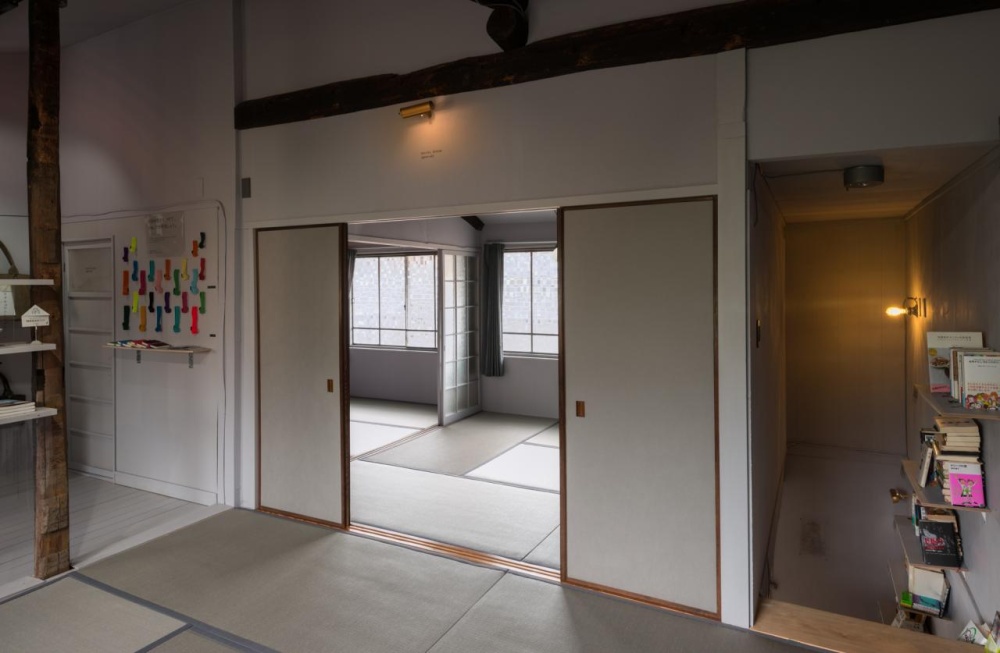
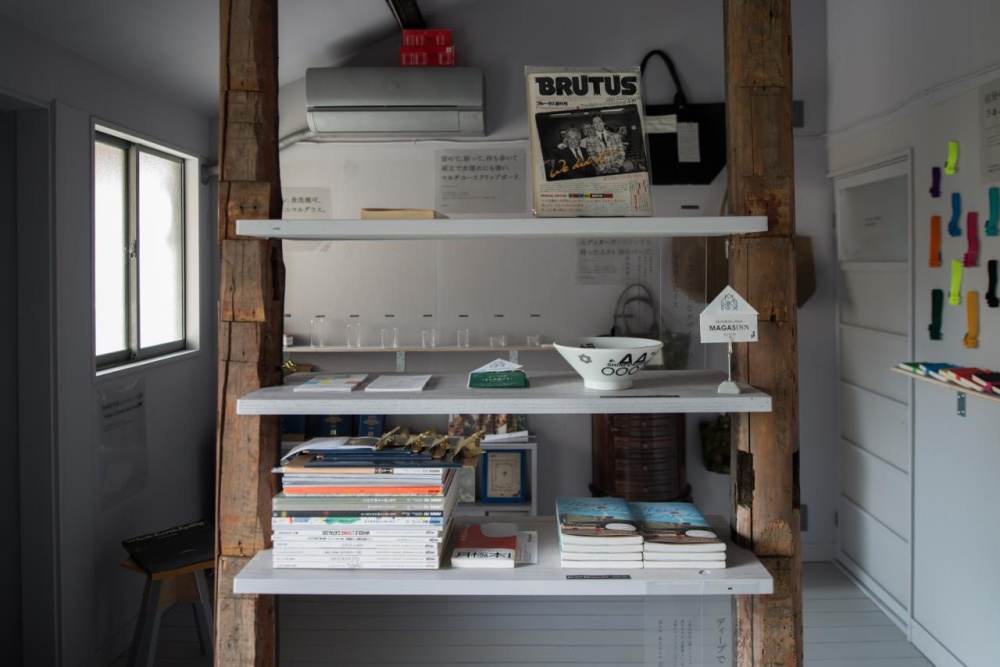
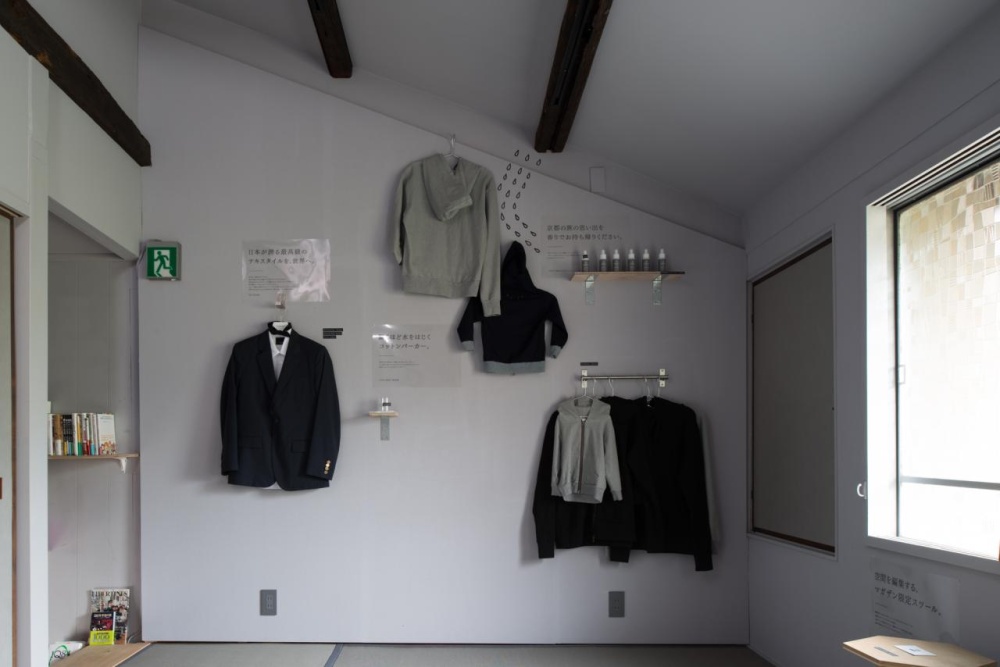
The “special editions” are unique expressions only created here. “Magazine hotels” bring different people together.
One of the unique aspects of MAGASINN KYOTO is that it offers “special editions,” just like a conventional magazine. It is also open to the general public so that people other than hotel guests can also enjoy the “special edition” displays and events. New “special editions” are offered seasonally, and the exhibition space also has new and changing “editions.”
The “special edition” idea came from editor-in-chief Iwasaki’s view that he “wanted to try working with a certain person,” and “to try making something a reality.” He came up with the concept after considering what he could do by creating MAGASINN “together with different people, unrelated to what is trending in the world.” Of course, Kyoto provides the context. Iwasaki says that he “definitely thinks people can get a better sense of Kyoto by staying here than by seeing Kyoto in print or via online media.”
In the previous “special edition,” he hosted a special interior design edition “Grip our handle, open your box” with NESSHII, a unit made up of designer Akane Onuki and woodwork artist Shima Inoguchi, as joint editors. It swaps out all the handles on boxes and drawers with fixtures that people normally use in their everyday lives, such as faucets and light bulbs, creating things people instantly want to touch. Touching all these works brings new awareness to the action of “grasping a handle” that people would never normally notice. This kind of discovery experience is the highlight of MAGASINN KYOTO “special editions.”
The next special edition will be the “Subculture Special Edition.” This collaboration with VOU, a miscellaneous goods shop and influential leader in Kyoto subculture, will be called “Staying at VOU.”
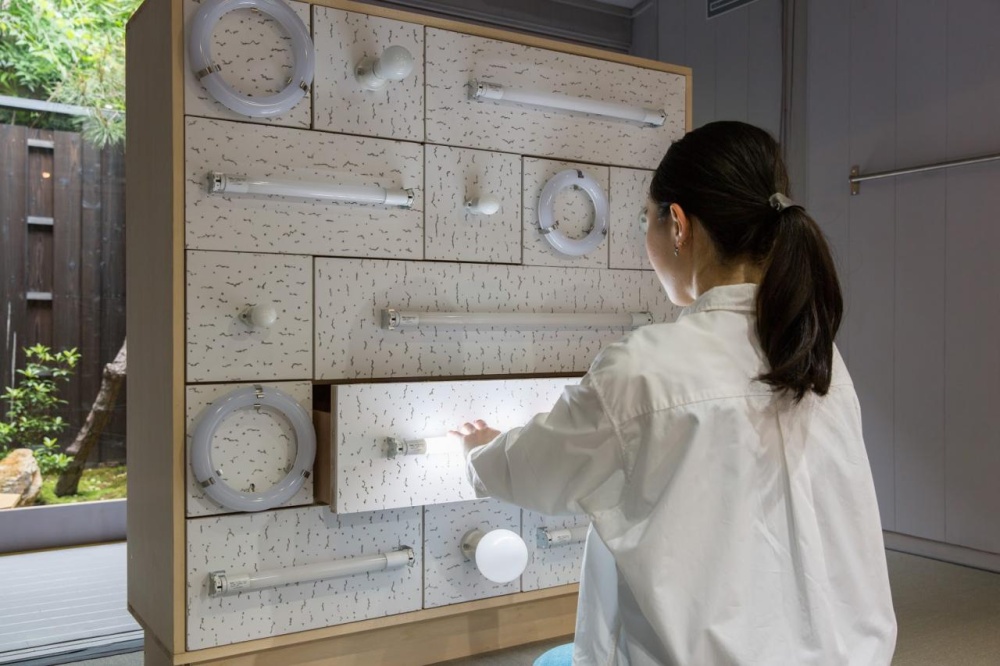
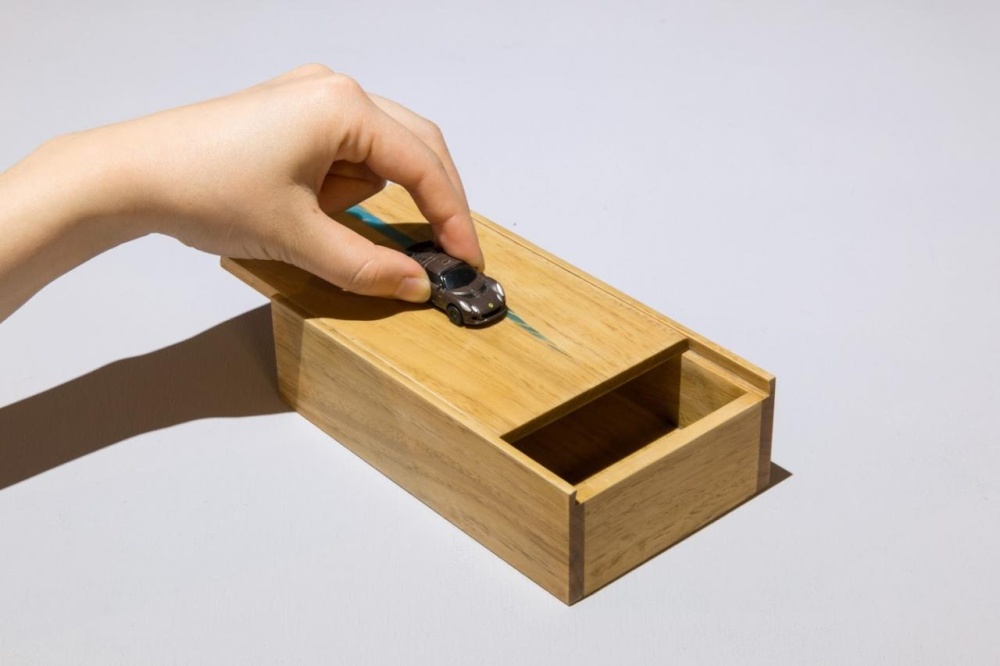
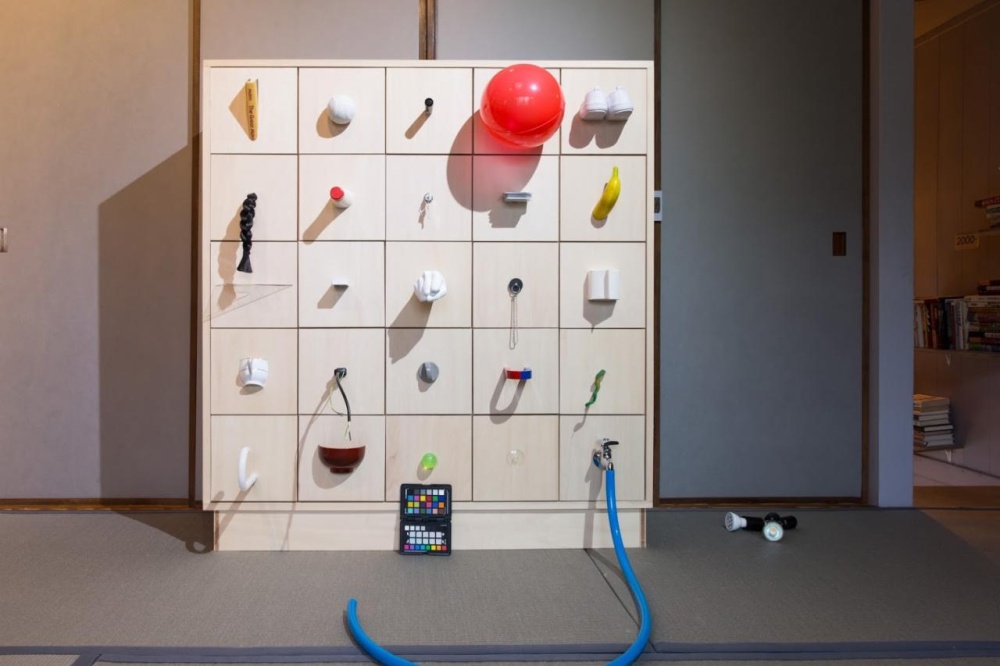

Iwasaki wants to establish MAGASINN properties in various regions around Japan and the world.
It seems that local people and families also come to have fun or have a coffee at MAGASINN KYOTO. From this year, it will serve as a venue for the annual “Jizo-Bon” event where jizo, considered protectors of travelers and deceased children in Buddhism, are paid respect to. An event where people from the local neighborhood gather for the Obon Festival and enjoy snacks and alcohol, having this event at MAGASINN KYOTO shows just how much it has integrated into the local community. Iwasaki says, “We’ll keep expanding. I want to make more MAGASINN properties in other areas that I like.” Each area will have an editor-in-chief, and each will share information about the context of that local area. He dreams of branching out with MAGASINN KOBE, MAGSINN TOKYO and even MAGASINN NEW YORK. . . .
And what’s more, although this is a medium that began from “physical space,” Iwasaki is also thinking of broadening its reach into print and online media. MAGASINN KYOTO makes remarkable experiences possible. Be sure to check it out at least once when you come to Kyoto.
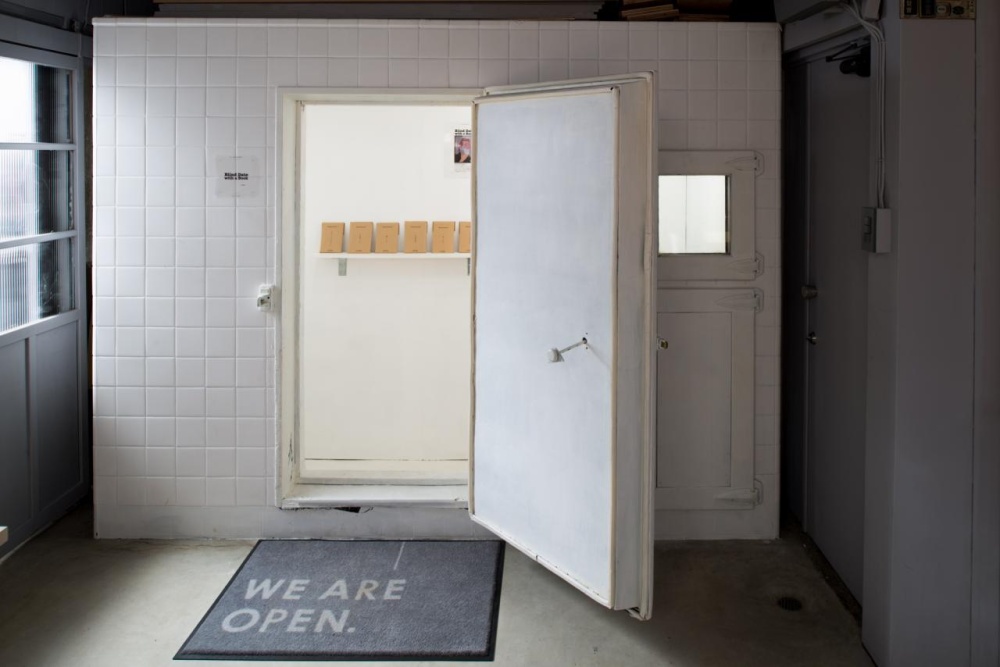
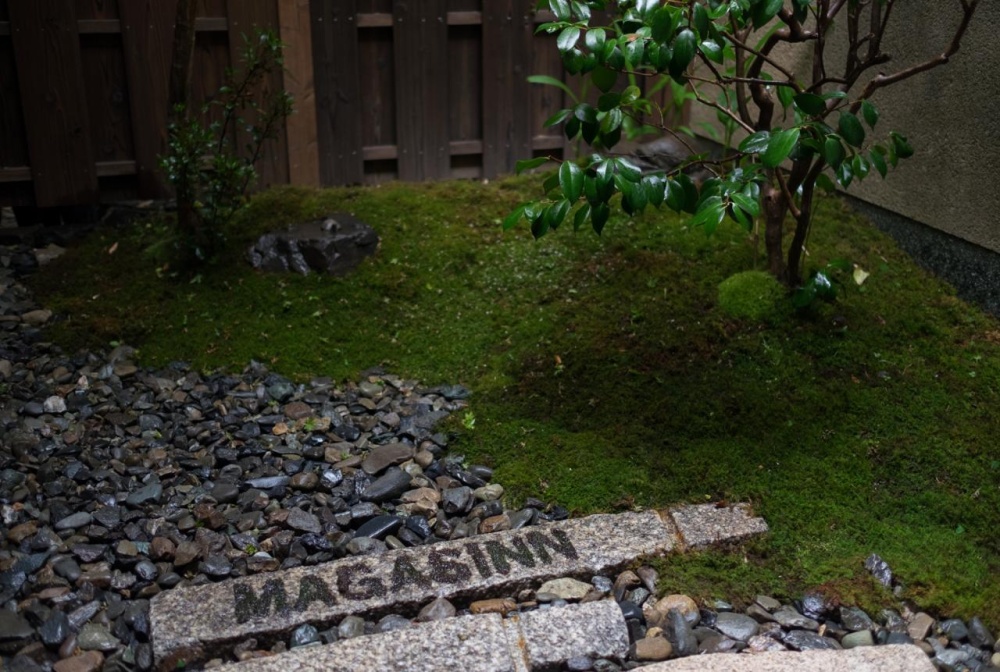
Photos courtesy of MAGASINN KYOTO
- 지도
- 685-1 Chushocho, Kamigyo-ku, Kyoto City, Kyoto Prefecture
- 전화
- +81-75-202-7477
- 웹 사이트
- https://magasinn.xyz/
- Room rate
- From 5,000 to 15,000 yen per guest for one night (varies by season), up to five guests (fees from 6,000 yen apply for each additional guest)
- Check-in
- Weekdays and Saturdays: 16:00–20:00, Sundays and public holidays: 14:00–20:00
- Check-out
- By 11:00
제휴 사이트에서 더 많은 기사 읽기

언어 : Japanese
https://www.onestory-media.jp/ONESTORY endeavors to explore various the destinations in Japan and to present the sensibilities brought by the story of the journey.


